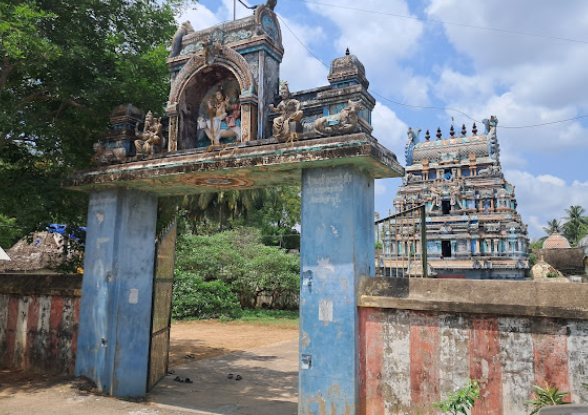Sage Vyakrapada visited Omampuliyur and prayed to Lord Shiva, asking for a divine dance darshan in Chidambaram. In honour of his devotion and prayer, Lord Shiva is worshipped here as Pranava Vyakrapureeswar. The goddess is revered as Poongodi Nayaki.
A notable event associated with the temple is the story of King Sadananda, a devout Shiva worshipper, who was cured of leprosy by bathing in the holy Varadanan tank at this temple.
Another significant event highlights the temple's sanctity: two virgins from the celestial realm were transformed into a swine and a human due to a curse by Sage Durvasa. They were pursued by a tiger and sought refuge at Gowri Theertha. A woman there, while drying her hair after a bath, had a few drops of water fall on the virgins, miraculously restoring them to their original forms.
Sthala Purana :
Sage Vyakrapada came to Omapuliyur and earnestly prayed to Lord Shiva, requesting a divine dance darshan similar to that in Chidambaram. In honour of his devotion and prayer, Lord Shiva is worshipped here as Pranava Vyakrapureeswara. The goddess is revered as Poongodi.
The temple is also known for a significant event involving King Sadananda, a devout follower of Shiva, who was cured of leprosy by bathing in the sacred Varadanan tank located at the temple.
Another remarkable event highlighting the temple's sanctity involves two celestial virgins who were transformed into a swine and a human due to a curse from Sage Durvasa. They were pursued by a tiger and sought refuge at Gowri Theertha. A woman, who had just bathed in the tank and was drying her hair, accidentally let a few drops of water fall on the virgins, miraculously restoring them to their original celestial forms.
